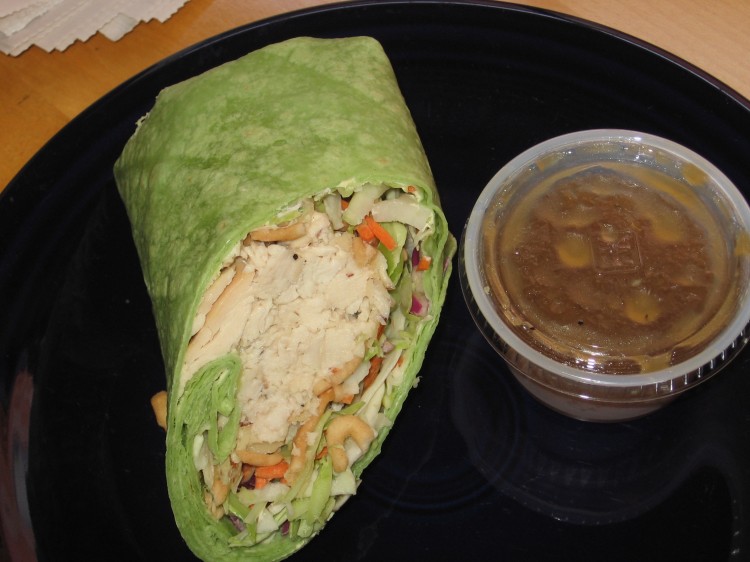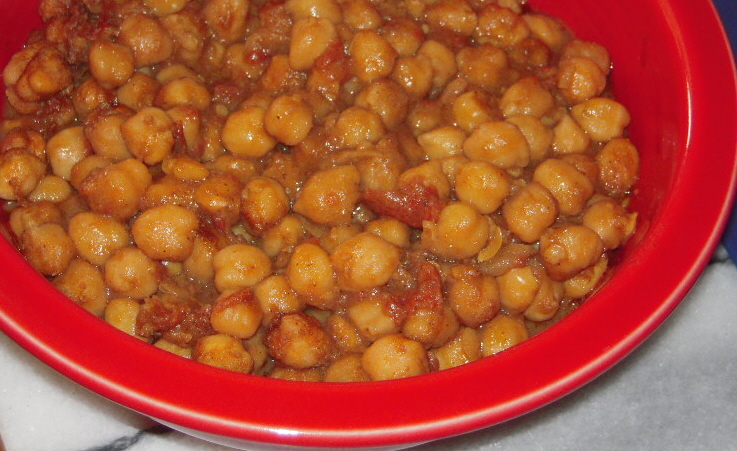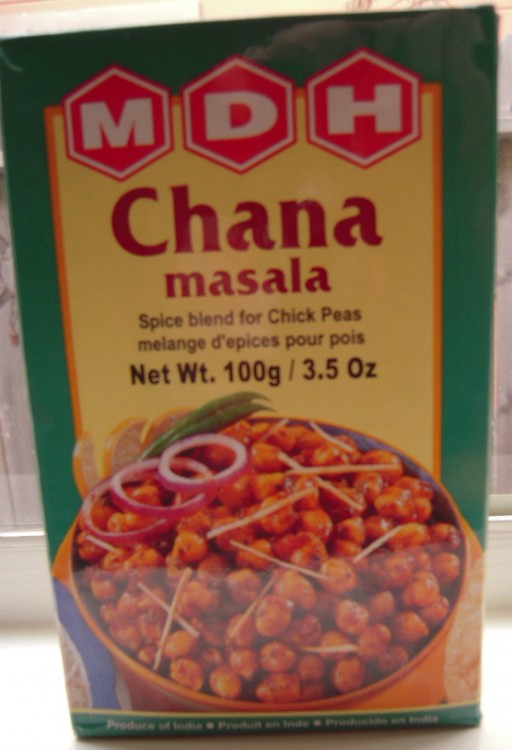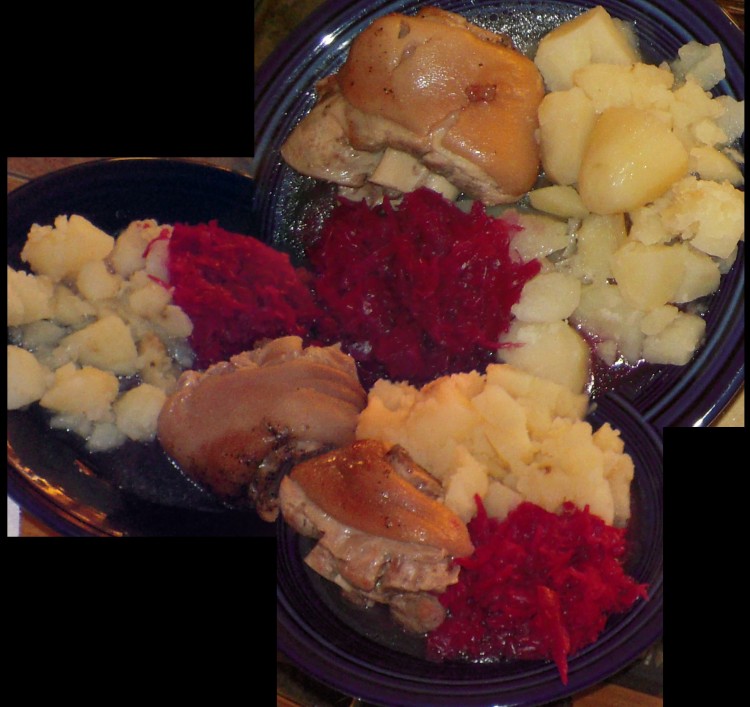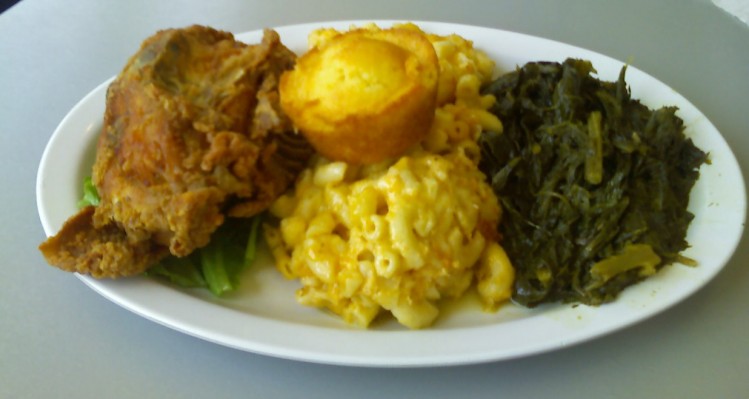
Matthew’s plate at The Home of Chicken and Waffles in Oakland
Matt and I thought we should have something decadent in honor of school starting this week. Having gone through all the acting classes offered at Berkeley City College, he registered for one at Laney College, which put us near downtown Oakland as we eyeballed the location of the campus vis a vis the Lake Merritt BART station.
After getting our business taken care of, we decided to go to Home of Chicken and Waffles (444 Embarcadero West, Oakland), which is right across from Barnes & Noble near the main entrance to Jack London Square. It’d certainly be hard to get more decadent than fried chicken, waffles and macaroni and cheese, plus we wanted to give this place one more shot after having had a mediocre meal with poor service a few years back.
When we walked in, we were greeted immediately and made comfortable while a table was prepared for us. I noticed that the restaurant, which has a kind of retro-diner theme, added a bar with a nightclubby feel in a space to the right of the main dining area. Nice.
Once seated in a comfy booth by the windows, we were introduced to our server, who handed us a menu with a huge selection of combo plates, whose names and representations were part of a colorful mural behind the counter. Home of Chicken and Waffles bills itself as a Southern-style restaurant, and accordingly offers quite a variety of eats, including salads, a full range of breakfast foods, and a number of Southern sides, like greens and mac and cheese.
The problem I had (and I recall having it the last time) was finding a combo that had enough chicken and not too much else. While you can order extra chicken a la carte, it is not really cost effective, given that combo prices are not really low to begin with.
I settled on a combo called “Kim’s Creation,” that came with a breast, wing, grits, two eggs and a biscuit for just under $11. Matthew chose the “Princess Jordan,” for just under $12: one breast, mac and cheese, greens and corn bread. We also threw caution to the wind and got the fried chicken livers appetizer for $6.75. What the heck, in for a penny.
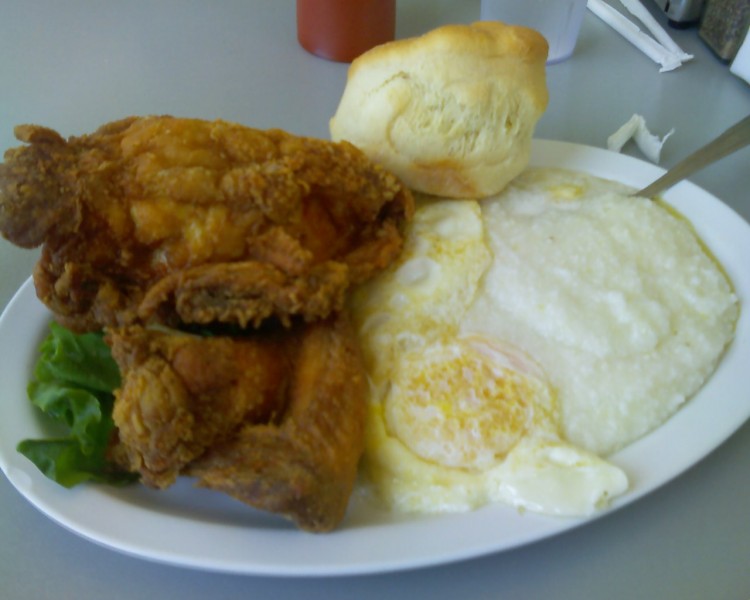
My plate at The Home of Chicken and Waffles in Oakland
The entrees came first, the livers therafter, so we wound up eating everything together, which worked out fine, though they should be more careful about this. It’s not like the place was jammed at that time of day, so an error like this always makes me wonder about busy times. That said, the server was attentive and friendly, so that makes other things better for me.
There is no doubt that things are made to order here. While the massive chicken breasts were a bit dry, they were not greasy and had good flavor. My wing, however, was excellent, and I will make a point of ordering them exclusivly the next time. The two eggs on my plate were cooked perfectly (over easy), so I had plenty of yolk action with the grits.
The mac and cheese was proclaimed “very good” by his nibs, and he should know, because it is the defining part of a Southern meal for him. I prefer greens, which were standard here, and I did get some sandy grit in the forkfuls I nabbed off Matt’s plate.
While the cornbread was good, the biscuit was seriously top-notch – tender and tasty, with just enough density to satisfy. I was sorry I traded it for greens, to be honest with you.
The highlight of the meal for me was the fried chicken livers. A goodly amount arrived straight out of the fryer, and, joy of joys!, they were not overcooked, rather creamy inside and crispy outside, with just enough batter and seasoning to enhance and not overpower them. If you eat this kind of thing once every five years, you want it done right. I would have been crestfallen if they arrived like tennis balls.
One beverage issue I should mention here is that the sweet tea ($2.50 a pop) does not come with refills, like the regular iced tea and soda. I don’t understand this. Isn’t sweet tea just iced tea with lots of sugar?

Matthew at the home of chicken and waffles in oakland
I will certainly come back because our overall experience was much better this time around, though I’ll apply all we learned to my next order.

